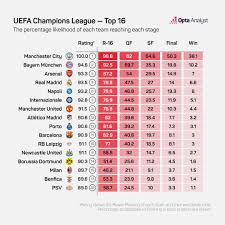
Introduction
In the realm of sports, data analysis has become a critical element in understanding team performance and player efficiency. Among the prominent names in the sports analytics sector is Opta, a company known for providing detailed statistics that inform narratives around sporting events. With the growing reliance on data-driven decision-making, Opta stats have gained immense importance, not only for teams and coaches but also for fans, analysts, and broadcasters.
What are Opta Stats?
Opta Stats offers comprehensive performance data covering various sports, including football, rugby, cricket, and basketball. Their dataset includes everything from basic statistics such as goals, assists, and matches played to advanced metrics like player movement and decision-making processes during a game. This level of detail assists teams in evaluating their strategies and player contributions with remarkable accuracy.
Recent Developments
As of 2023, the impact of Opta Stats has been seen at multiple levels, particularly in professional leagues across different sports. For example, during the English Premier League season, managers and analysts have increasingly turned to Opta data to optimise team formations and player selection based on their performance stats. Moreover, the integration of Opta stats into broadcast graphics has made it easier for viewers to understand in-game dynamics, enhancing they viewing experience.
The Impact on Decision-Making
The strategic use of Opta Stats has also influenced how clubs recruit players. Scouts and managers now rely more heavily on data metrics to assess prospective signings, rather than solely on traditional scouting methods. Events such as the UEFA Champions League have seen clubs like Manchester City and Liverpool utilising these insights to augment their scouting processes, ensuring that they remain competitive on domestic and international fronts.
Future Prospects
With technology rapidly advancing, the future of Opta Stats looks promising. The use of artificial intelligence and machine learning is set to provide even deeper insights, potentially revolutionising how teams utilise statistical analysis. As data accessibility increases, fans, too, may gain greater insights through applications and platforms that present Opta data in an engaging way. Furthermore, as the global demand for accurate sports data continues to grow, Opta is likely to expand its offerings to include more sports and detailed analytics.
Conclusion
Opta Stats have become an indispensable part of modern sports analytics, shaping strategies in coaching, player recruitment, and fan engagement. As the sports industry becomes more data-driven, understanding and utilising these statistics will be crucial for teams aiming to succeed in an increasingly competitive landscape. For fans and analysts alike, keeping an eye on how Opta stats evolve will provide valuable insights into the future of sports analytics.
You may also like

Exploring Opta and Its Impact on Sports Statistics

The Importance of Opta Stats in Sports Analytics
